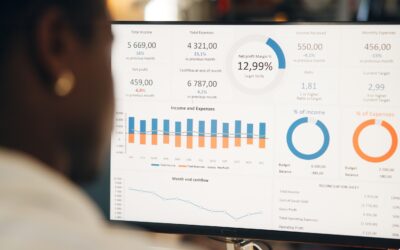Every donor has a story. The path from their first contribution to becoming a dedicated advocate for your mission is a journey with distinct stages, each requiring care and intentionality. Understanding the donor journey map allows your nonprofit to create experiences that deepen connections, build loyalty, and encourage greater generosity over time.
Stage 1: Awareness and First Engagement
The journey begins the moment a potential donor discovers your organization. This might be through social media, a local event, or word-of-mouth. At this stage, your goal is to make a strong first impression with a clear mission, relatable stories, and a seamless way to learn more.
Providing easy opportunities for initial involvement, like signing up for updates or making a small first gift, creates a foundation for future engagement. The first interaction should feel personal and welcoming, setting the tone for a long-term relationship.
Stage 2: The First Gift
The first donation is a major milestone. It signals that a supporter trusts your mission enough to invest financially. This is the perfect moment to communicate gratitude and impact. Send a thank-you that is prompt, heartfelt, and specific about what their gift will accomplish.
Personalizing the message shows the donor they are more than just a transaction. Include a brief story or example that connects their contribution to real change. This creates an emotional bond and increases the likelihood they will give again.
Stage 3: Building Trust and Connection
After the first gift, the relationship is still new. Consistent communication and transparency about how donations are used are essential. Share updates, success stories, and clear breakdowns of program results. When donors feel confident that their money is making a measurable difference, they are more inclined to continue their support.
At this stage, tracking donor interactions is valuable for understanding patterns and preferences. If your organization is not using a full CRM, tools and strategies like those outlined in donor tracking without a CRM can still help you build a reliable system for follow-up.
Stage 4: Second and Third Gifts
Research shows that once a donor gives a second time, the odds of them becoming a long-term supporter increase dramatically. To encourage these follow-up gifts, provide timely invitations tied to impact milestones, campaigns, or special projects.
Every follow-up request should remind the donor of the difference they made before and invite them to be part of the next chapter. Small but meaningful touches, like handwritten notes or donor recognition lists, can strengthen the relationship.
Stage 5: Becoming a Regular Giver
Regular giving is the heartbeat of sustained nonprofit funding. Many supporters find it easier to commit to smaller, recurring gifts rather than occasional larger amounts. Encouraging this shift benefits both the donor and the organization, creating predictability and long-term stability.
Our guide on how to ask for monthly donations offers practical scripts and mindset shifts to make this transition smooth. The key is to frame recurring giving as a way to make a steady, lasting impact without the need to remember each donation date.
Stage 6: Advocacy and Involvement
Donors who have been engaged for some time often become advocates for your mission. They may share your content, bring new supporters into the fold, or volunteer their time. At this point, they are not just contributors—they are champions for your cause.
Recognize and celebrate these donors in public ways when appropriate. Share their stories, highlight their contributions, and invite them into behind-the-scenes opportunities that make them feel valued and connected.
Stage 7: Legacy and Lifelong Support
The final stage of the donor journey is a deep, ongoing commitment that may include planned giving, major gifts, or long-term advocacy. These donors see your mission as part of their personal legacy. Maintaining this relationship requires personalized attention, consistent updates, and ongoing expressions of gratitude.
Even at this stage, never assume the relationship is permanent. Continue to reinforce the donor’s importance, communicate the impact of their support, and keep their involvement meaningful and rewarding.
Optimizing Touchpoints Along the Journey
Every stage of the donor journey offers opportunities to strengthen the connection. Here are some ways to make the most of each interaction:
- Personalization: Address donors by name, reference their past involvement, and tailor communication to their interests.
- Impact Updates: Show progress toward goals and the specific outcomes their gifts have made possible.
- Ease of Giving: Keep donation forms simple, mobile-friendly, and quick to complete.
- Consistent Communication: Share a balanced mix of updates, stories, and appeals to maintain engagement without overwhelming.
- Recognition: Publicly thank donors when appropriate and offer exclusive opportunities to deepen involvement.
The Long View: Relationships, Not Transactions
When nonprofits view donor engagement as a long-term relationship rather than a series of one-off transactions, they create stronger bonds and more sustainable funding. The donor journey map is a powerful tool for understanding where each supporter is and how to guide them toward becoming a lifelong advocate.
By providing consistent value, transparent communication, and personalized experiences, you can transform first-time givers into devoted champions for your mission. The result is not just more gifts, but a stronger community of supporters who believe deeply in the work you do.




0 Comments